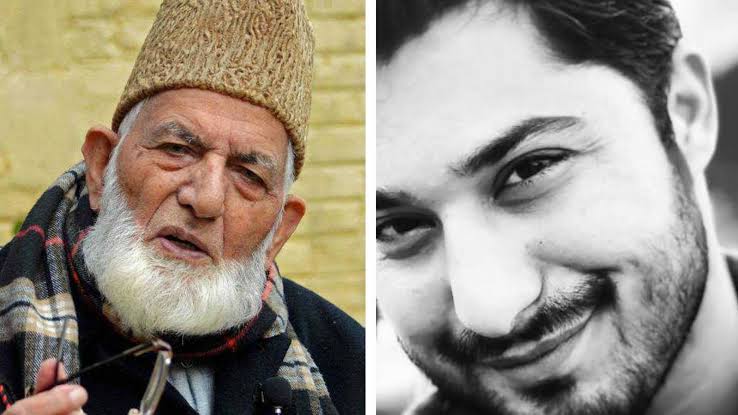The Silent Storm in Kashmir’s Classrooms
By: Javid Amin | 24 Aug 2025
In the hushed classrooms of Kashmir, a storm brews—quiet, subtle, yet dangerously transformative. Security agencies in Jammu & Kashmir have launched a discreet but intense probe into radicalisation in private schools and unregulated madrassas.
Intelligence reports warn of a surge in pan-Islamist ideologies being infused into young minds, often through clerics who preach rigid interpretations of Islam—teachings that starkly oppose the Sufi ethos that has defined Kashmir for centuries.
This isn’t just a law-and-order challenge. It’s about identity, heritage, and the psychological vulnerability of a generation. If left unchecked, it threatens to replace Kashmir’s pluralistic spiritual fabric with narrow, exclusionary worldviews.
Kashmir’s Heritage Under Siege: From Sufism to Salafism
1. The Sufi Roots of Kashmiri Islam
For centuries, Kashmir was shaped by the gentle influence of Rishis and Sufis:
-
Saints like Sheikh Noor-ud-din Noorani (Nund Rishi) and Lal Ded symbolized syncretism—a blend of Islamic, Hindu, and Buddhist influences.
-
Shrines like Hazratbal, Charar-e-Sharief, and Makhdoom Sahib became centers of communal harmony.
-
Practices such as Ziyarat (shrine visits), Qawwali (devotional music), and Rishi-inspired asceticism were hallmarks of Kashmiri spirituality.
2. The New Wave of Influence
Today, however, intelligence reports suggest that:
-
Shrine visits are being branded “un-Islamic.”
-
Sufi practices are dismissed as bid‘ah (innovations).
-
Sermons glorify a rigid, pan-Islamist identity that prioritizes political separatism over spiritual devotion.
This marks a profound identity shift: from Kashmiriyat’s inclusive ethos to imported ideologies that fracture social bonds.
The Madrassa Boom: Education or Indoctrination?
1. Rise of Unregulated Institutions
While government schools struggle with staff shortages, poor infrastructure, and outdated curricula, unofficial madrassas are expanding rapidly. Many lack registration, oversight, or standard curricula.
-
In some towns, for every government school, there are two madrassas.
-
These madrassas often rely on foreign funding with little transparency.
-
The absence of state monitoring creates a vacuum where ideological grooming thrives.
2. Competing with Private Schools
Private schools, too, are not immune. Some well-known institutions are under probe for allegedly allowing preachers with extremist leanings to address students.
This dual system—state neglect and unchecked private expansion—creates a fertile ground for ideological polarization.
The Digital Battlefield: Social Media as a Radical Classroom
The probe highlights how social media has become the new madrassa:
-
Telegram, WhatsApp, and Instagram groups circulate propaganda videos, mixing global jihadist content with local grievances.
-
Fanatical influencers glamorize extremist thought, presenting it as “authentic Islam.”
-
Girls’ radicalisation is a new concern, with private groups targeting teenagers with emotionally charged narratives about identity, modesty, and political victimhood.
Social media transforms isolation into community, convincing vulnerable youth that they belong to a global cause.
Drugs and Radicalisation: A Deadly Cocktail
The report also links drug abuse with radicalisation, forming a vicious cycle:
-
As police crack down on heroin smuggling, medical opioids like Tramadol and cough syrups flood the valley.
-
Students, numbed by addiction, become easier targets for ideological manipulation.
-
Radical groups exploit these vulnerabilities by offering a sense of “purpose” and “purity” to addicted youth.
Thus, drugs and radical ideologies form a double-edged assault on Kashmir’s next generation.
Voices of Concern: Warnings from Within
Interestingly, even ex-separatist leaders and clerics are raising alarms.
-
Some fear that the new radical wave rejects Kashmir’s own cultural roots, threatening the legitimacy of older separatist narratives.
-
Parents, too, worry about losing children not just to militancy but to a worldview that isolates them from society itself.
-
Teachers whisper anxiously about losing influence to clerics and online influencers.
These voices underline a paradox: when extremism grows too rigid, even its earlier proponents feel alienated.
Strategic Implications: Beyond Security
The probe is not just a counter-terror exercise—it’s a socio-cultural emergency.
1. Educational Failure
Thirty years of conflict left Kashmir’s schooling fractured. Frequent shutdowns, security lockdowns, and now the shadow of radicalisation mean students are deprived of critical thinking tools that could protect them from manipulation.
2. Cultural Erosion
If shrine visits, Rishi traditions, and local customs are erased, Kashmir risks losing its unique identity—its historic Kashmiriyat. What replaces it may be a borrowed, monolithic worldview that sees diversity as threat.
3. Psychological Vulnerability
Conflict trauma, unemployment, and identity crises drive youth to seek belonging in rigid ideologies. Radicalisation, then, is not merely indoctrination—it is also self-medication against despair.
The Root Causes: Why Youth Are Vulnerable
-
Conflict Trauma: Three decades of conflict have normalized violence and uncertainty.
-
Unemployment: With joblessness among youth exceeding 25%, despair is rampant.
-
Weak Education System: Outdated curricula and absentee teachers make schools less attractive than madrassas.
-
Family Breakdown: Migration, poverty, and drug abuse weaken parental supervision.
-
Identity Vacuum: With cultural traditions eroded, young people grasp for “pure” identities offered by extremists.
Comparative Lessons: How Others Tackled Radicalisation
-
Indonesia: Integrated madrassa reform, making secular subjects mandatory.
-
Morocco: Trained clerics in moderate theology, exporting “spiritual ambassadors.”
-
Punjab (India): Community-driven anti-drug campaigns linked rehabilitation with employment.
Kashmir can adapt these lessons by:
-
Mainstreaming madrassa education with oversight.
-
Modernizing state schools to restore trust.
-
Training local clerics in Kashmir’s Sufi traditions.
-
Linking de-addiction with vocational training.
The Way Forward: From Probe to Policy
1. Regulatory Action
-
Mandatory registration of all madrassas.
-
Transparency in funding and curriculum.
2. Educational Reform
-
Introduce critical thinking, arts, and ethics in state schools.
-
Train teachers to detect early signs of radicalisation.
3. Cultural Revitalization
-
Promote Sufi literature, music, and history in curricula.
-
Encourage shrine visits, cultural festivals, and interfaith dialogues.
4. Digital Counter-Narratives
-
Launch youth-led campaigns on Instagram, YouTube, and podcasts.
-
Highlight stories of resilience, cultural pride, and modern Kashmiri role models.
5. Drug Rehabilitation
-
Expand de-addiction centers in every district.
-
Link recovery to sports, arts, and employment programs.
Bottom-Line: A Battle for Kashmir’s Soul
The radicalisation probe in Kashmir’s schools is not just about tracking extremist sermons or banning madrassas. It is about protecting the soul of Kashmir—its heritage of tolerance, its culture of syncretism, its future built on merit and dignity.
If ignored, the valley risks raising a generation divorced from its own identity, caught between drugs and dogma.
If acted upon with vision, Kashmir can transform this crisis into renewal—restoring Sufi traditions, empowering education, and giving youth a purpose rooted in pride, not fear.
The choice is urgent, and the stakes are nothing less than the soul of Kashmir’s future.



